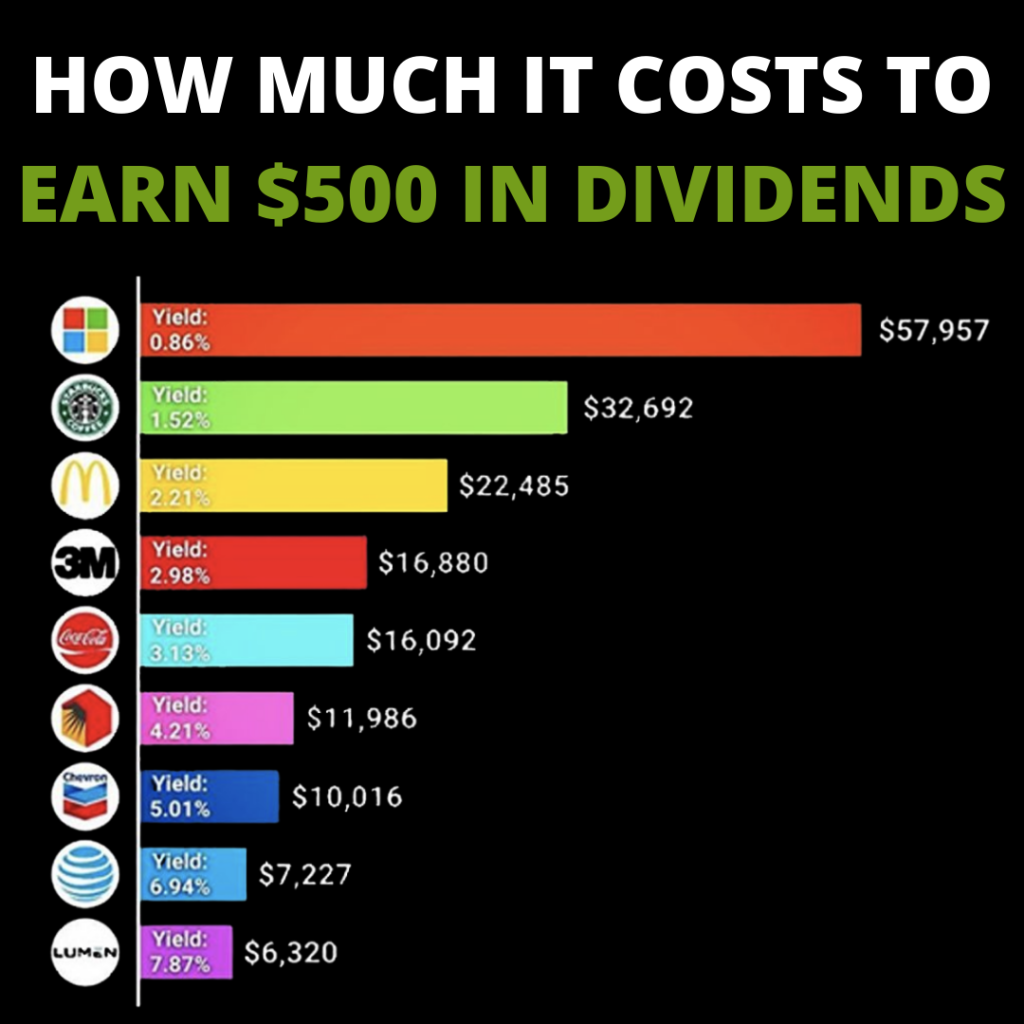Sorry, no content matched your criteria.
Dividend Stocks
High Dividend Stocks
Despite all the talk about rising interest rates, owning high dividend stocks is still the best way to add income to your portfolio for the foreseeable future.
While we hear talk on a daily basis about inflation and higher interest rates, we have seen only a slight move up on the rates on 10-year treasury bonds. While the move from 0.50% to the current 1.58% yield roiled markets, it's not going to put much more cash in the pockets of income investors.
The sparkling 2.2% on the 30-year bond does not do much for those needed to earn a decent rate of their retirement cash.
On the other hand, the high dividend stocks we're going to show you yield over 7%. That's more than triple the rate you'll get from even the best government bonds.
The combination of low starting rates and the real possibility of inflation and higher rates on the horizon is a new problem. Income investors will have to deal with something they have not faced in well over a decade. The last time we saw a significant move higher in rates was back in 1998, when rates moved from 4.6% on the 10-year to almost 7% in early 2000.
The possibility of losing principal due to interest rate risk is something no income investor has dealt with in over 20 years.
We haven't seen inflation rates of 4% since 1990.
It is a whole new ball game for income investors, and most have never played this version of the game. That's why we're going to walk you through it and show you some of the best dividend stocks to buy now.
High dividend stocks are simply the best way to add income to your portfolio in this low interest rate, growing inflation environment.
And we'll do even better than give you high-yield dividend stocks. We're looking at a specific group of dividend-payers called business development companies (BDCs).
You may recall that BDCs are investment funds that lend money to companies from expansions, financing merger and acquisitions transactions, and other corporate uses. Most BDCs lend in the middle market of corporate America, where most companies have not yet gone public.
If interest rates go up, businesses that are borrowers of a BDC will see the rate on their loan go up.
Since business development companies pass through the interest payments, we should see our dividends go up as well.
That will protect us from interest rate risk.
Here are our top dividend stocks right now…
This High Dividend Stock Pays 8.9%
Bain Capital Specialty Finance Inc. (NYSE: BCSF) is an excellent example of a BDC that offers a nice combination of yield and rate protection. Over 97% of the loans made by Bain Capital Specialty are floating rate. At the current rate, Bain Capital Specialty shares are yielding 8.97%.
This BDC is affiliated with Bain Capital, a leading global alternative asset manager with over $130 billion in assets under management. The managers of the BDC can draw on the lending expertise of Bain Capital Credit, which manages $48.4 billion in assets in credit-related products.
Bain Capital Specialty is also joining up with another alternative asset manager, Pantheon Group, to expand into the direct lending markets in Australia and Europe.
Bain Capital Specialty Finance shares are currently selling at a 4% discount from the net asset value of the loans in the portfolio. You can buy high yields, interest rate protection, expert credit managers, and a measure of international diversification at a discount to the value of the current portfolio.
The Best Dividend Stock to Buy Now
Oaktree Specialty Lending Corp. (NASDAQ: OCSL) is another BDC that can offer investors the combination of an above-average yield and protection from rising interest rates. Oaktree shares are yielding 8.12% right now, and almost 90% of the portfolio loans have floating rate provisions.
Oaktree Specialty Lending is managed by an affiliate of Oaktree Capital Management, a credit manager with over $253 billion in assets. Oaktree is best known for its work in distressed debt and high yield markets, so it knows a thing or two about evaluating loans and measuring credit risk.
Oaktree's philosophy of investing in credit markets was developed by one of its founders, the legendary debt investor Howard Marks, who suggests that the BDC should place the highest priority on preventing losses rather than merely searching for prospective profits.
Oaktree Capital is known as a go-to company for many middle-market borrowers, which often creates first look opportunities at potential loan deals of Oaktree Specialty Lending.
Shares of Oaktree Strategic Lending are currently trading at about a 5% discount to the portfolio's value. This creates another opportunity to get world-class management, high yields, and protection against rising rates at a sale price.
A Top Dividend ETF to Buy Now
The Global X Nasdaq 100 Covered Call ETF (NASDAQ: QYLD) tracks the performance of the CBOE Nasdaq-100 BuyWrite V2 Index and is a dividend ETF that deserves a place in your portfolio. And for good reason too.
QYLD is an ETF designed to maximize passive income by doing the hard work of writing covered calls all while investing in the largest companies in the Nasdaq.
But there's a catch… QYLD doesn't offer significant capital appreciation.
Again, the ETF is designed to maximize passive income, specifically dividend payouts. So, the fund cut this to focus on paying double-digit dividends.
Don't let that scare you away, though.
When stocks trade sideways or drop, owning an income-generating ETF like QYLD will add stability to your portfolio. QYLD's total return was 20.99% compared to the S&P 500's 10.4%.
With a Morningstar rating of 4 out of 5 and an expense ratio of 0.6% – meeting the criteria of being lower than 1% – QYLD is a strong ETF to invest in.
Buying High Dividend Stocks
Dividend stocks have remained one of the most reliable ways to collect steady income from the stock market. Many companies pay out dividends quarterly, which makes it an attractive income source, but there are also companies that pay monthly or annual dividends.
The best dividend paying stocks increase their dividend payouts as the company grows and profits increase. Investing in high-dividend stocks can be a consistent form of passive income that can prepare you for a comfortable future.
Ready to take advantage of the unique investment opportunity that high dividend stocks present? Keep reading to learn how they work and how to maximize your profits, then check out our collection of articles and resources below to learn about the latest in dividend stocks.
What Are Dividend Stocks and How Do They Work?
A publicly-traded company pays out dividends to shareholders after its board of directors meets to decide whether the company has made enough profit to warrant payment. The amount of total dividend payments compared to the company’s net income is known as the payment ratio.
Companies that pay out dividends can do so either in cash or stock:
- Cash dividends are regular cash payments to shareholders. The company agrees to pay a percentage of profits in cash to investors. How much each shareholder receives is based on the number of shares they own. For example, if you own 100 shares in Company X and they pay $8 per share, you’ll receive $800 in addition to whatever profits you’ve made off of rising share prices.
- Stock dividends are similar to cash dividends, but they pay shareholders in additional shares in the company. For example, if Company X chooses to pay an 8% stock dividend and you own 100 shares in the company, you will have 108 shares after the payout.
As stated above, dividend payments vary by company. Whether a company chooses to pay cash or stock dividends, payouts are still done monthly, quarterly, or annually, depending on what the board of directors chooses.
Although not all companies pay dividends, some of the biggest and most profitable companies in the world do offer dividends—providing a bonus for investing in certain blue-chip stocks. In fact, some of the best high dividend stocks are household names such as Qualcomm Inc. (NASDAQ: QCOM), International Business Machines Corp. (NYSE: IBM) and Target (NYSE: TGT).
Generating Income with Dividend Stocks
Dividend investing can be an excellent way of generating passive income. The more shares of dividend stocks you own, the more money can be made.
To successfully earn an income with dividend stocks, there are a few indicators to look for when deciding which company to invest in:
- Growth of the company’s income, which could be an indicator of increasing dividends.
- The dividend yield or payment ratio a company offers at the time of stock purchase.
- The company’s balance sheet which indicates whether the company is profitable or has a lot of debt to overcome.

Dividend Stocks: Short-term vs. Long-term Investments
If you’re looking to make a profit investing in dividend stocks, there are two ways to do it:
- Long-Term Dividend Investing: Investing in companies that pay dividends and holding them for many years allows investors to continue to share in the company’s profits as it grows. Holding on to shares means that the shareholder receives a steady source of income as long as he or she maintains ownership. Reinvesting cash dividends or keeping stock dividends gives the investor greater ownership of the company.
- Short-Term Dividend Investing: Some investors choose to buy a stock to receive dividends and sell shortly after payout. However, when stocks are held for less than a year, they are classified as short-term and can be subject to different taxation than long-term investments.
Dividends and Capital Gains Taxation
The amount of tax paid on dividend stocks depends on whether the investment is long-term or short-term. This goes for any stock you buy and sell, not just dividend stocks.
Short-term capital gains (earnings on shares held less than one year) are taxed as regular income.
On the other hand, long-term capital gains (earnings on shares held longer than one year) are only taxed based on net capital gains over the year. Net capital gains are determined by subtracting annual capital losses from annual capital gains.
Depending on your net capital gains, you could owe between 0% and 20% in federal income tax.
High dividend stocks could be your solution to making steady, passive income that sets you up for a comfortable, secure future.
Don’t forget to check out Money Morning’s resources to help you successfully invest in income stocks and keep checking back to the most important investing advice from our experts.

